Couples Who Won The Nobel Prize
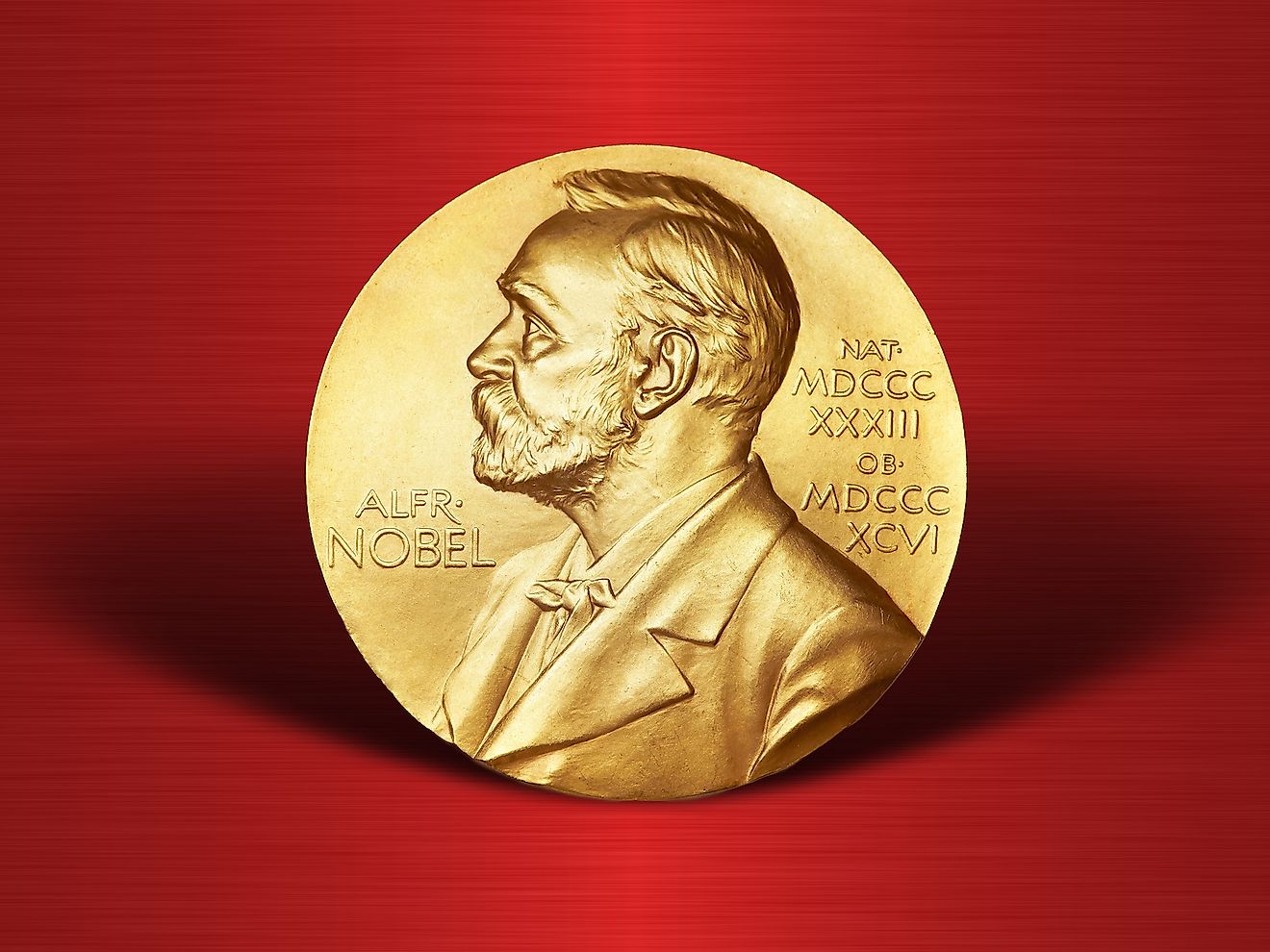
- Honored for their contribution to the field of physics, Marie and Pierre Curie were the first married couple to win a Nobel Prize.
- In 1974 and 1982, Gunnar Myrdal and Alva Reimer won Nobel Prizes in Economic Sciences and Peace; they are the only couple to win two awards in different disciplines.
- Despite their divorce two years after winning the Nobel Prize in Medicine in 2014, May-Britt and Edvard Moser continue to collaborate on various scientific projects.
The Nobel Prize is a prestigious international award given out annually in six fields: physics, chemistry, medicine, economic sciences, literature, and peace. As of 2019, it has been presented to 943 different people and organizations; however, in its 120 year history, the Nobel Prize has only been awarded to six married couples, the most recent winning it just last year. The following is a brief introduction to each couple and why they were deserving of such a high honor.
Marie and Pierre Curie (1903 and 1911)
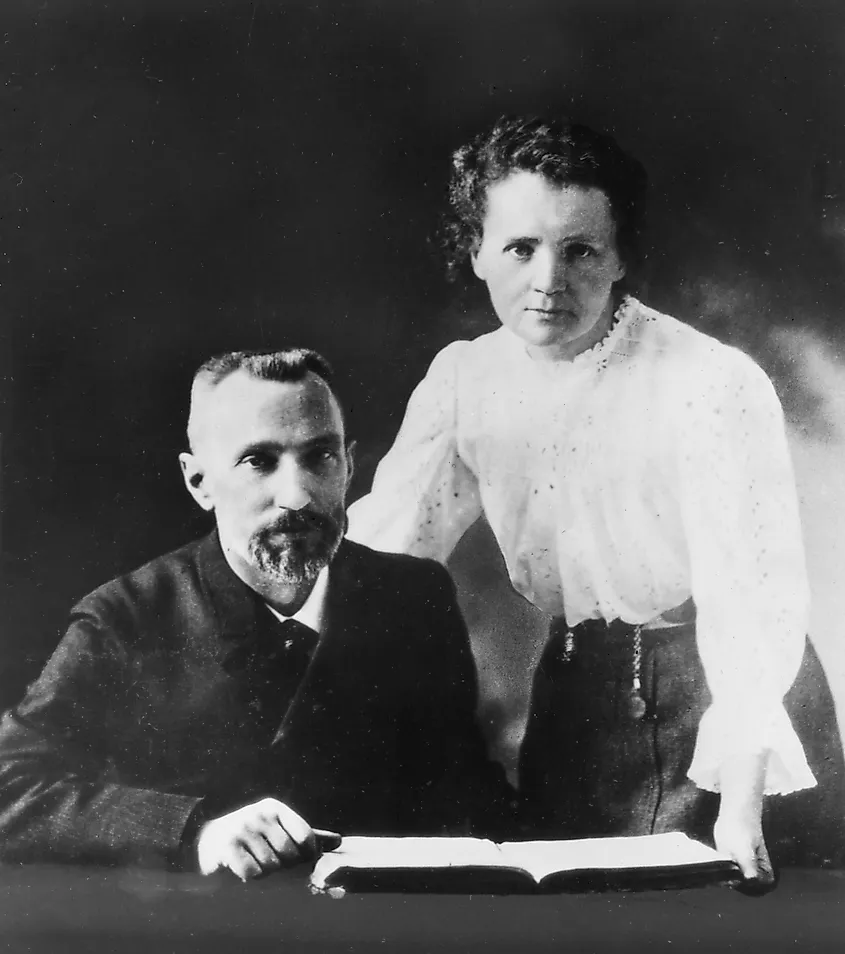
Marie Sklodowska grew up in Warsaw, Poland. From a young age, she was encouraged by her family and teachers to pursue higher education. This brought her to Paris where she eventually met Pierre Curie. The couple married in 1895. One year later, French physicist Antoine Henri Becquerel discovered evidence of radioactivity, inspiring Marie to push the boundaries of his research. Her work became so promising that Pierre abandoned his own to collaborate with his wife. In 1898, they discovered two new elements: polonium and radium.
Alongside Becquerel, Marie and Pierre won the Nobel Prize in Physics in 1903, becoming the first married couple to do so. Three years later, Pierre died from an accident involving a horse-drawn vehicle. Without her husband and colleague, Marie continued her research and went on to win another Nobel Prize in 1911, this time in Chemistry. She is the first person to win the prestigious award twice. Marie died many years later in July 1934.
Irène Joliot-Curie and Frédéric Joliot (1935)
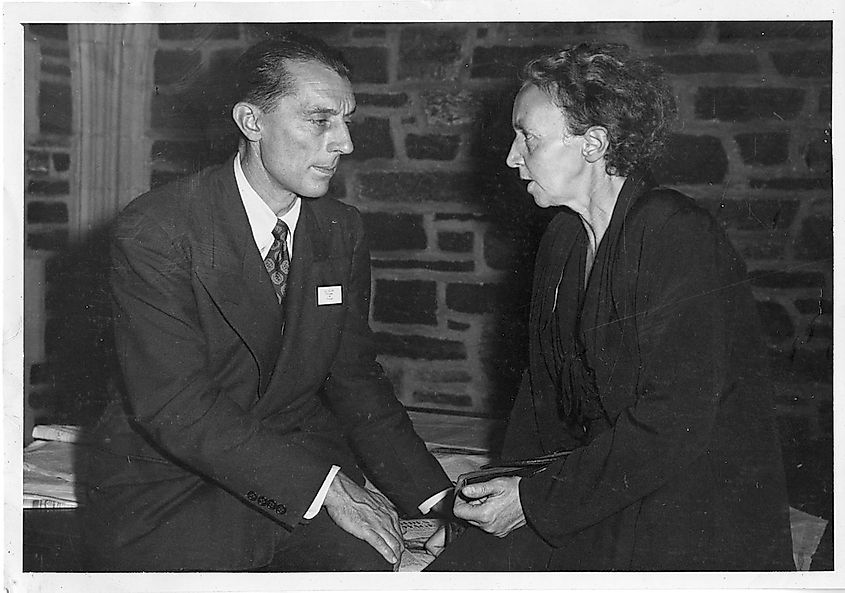
Irène Curie was born in Paris in 1897, six years before her parents would win the Nobel Prize in Physics. Unsurprisingly, she developed an interest in science, finding work at the Institut du Radium in 1918. Several years later, she met Frédéric Joliot who came to the institute to work as her mother’s assistant. Bonding over sports and art as well as science, Irène and Frédéric married in 1926. They conducted research together and separately, but they would be jointly awarded the Nobel Prize in Chemistry in 1935 for their discovery of artificial radioactivity.
Following the rise of Nazism, they grew concerned about what their research could mean in the wrong hands. Having successfully smuggled their documents out of France, Frédéric continued to work to ensure his laboratory could not be abused by the occupying German forces. After the war, Irène was appointed as the director of the Institut du Radium, but during the early 1950s, her health began to deteriorate. She died of leukemia in 1956. Frédéric passed two years later, but not before overseeing the completion of the Orsay laboratories that his wife had started before she died.
Gerty and Carl Cori (1947)
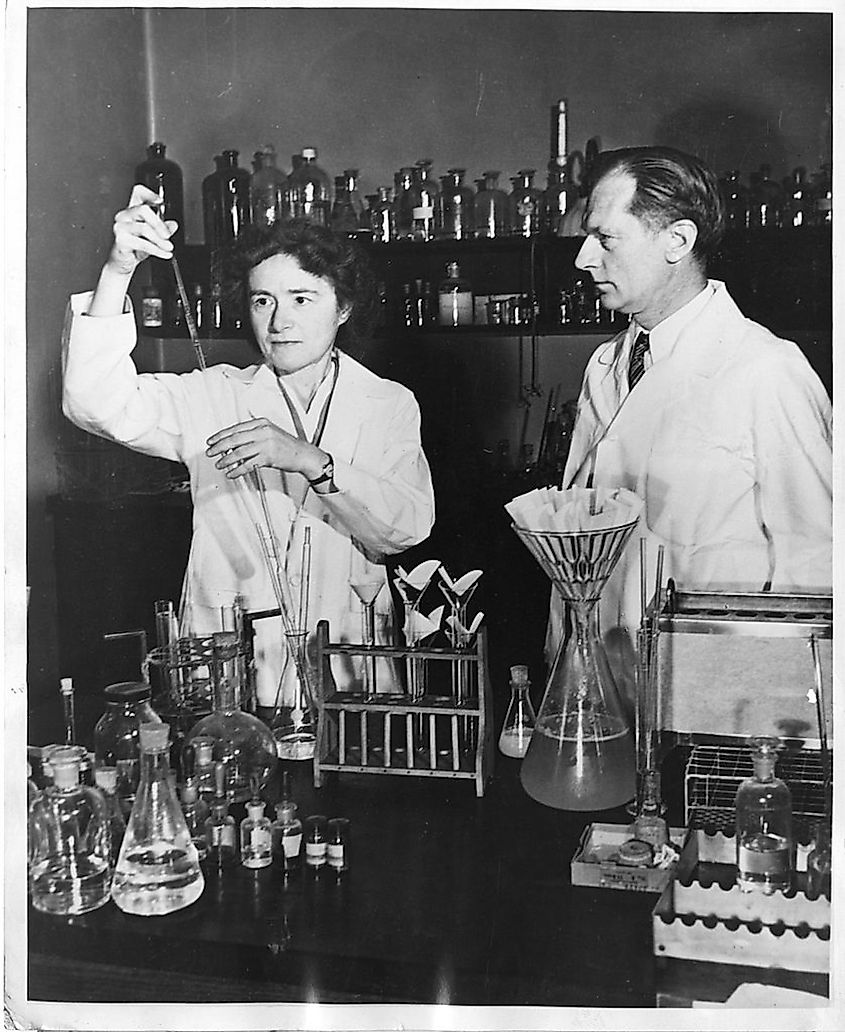
Gerty Radnitz and Carl Cori met in 1914 during their first year at Charles University in Prague. The pair immediately bonded over their love of research and mountain climbing. In 1920, they graduated from medical school, published their first joint paper, and were married in Vienna. They eventually immigrated to the United States after receiving job offers. By doing so, they escaped the rise of anti-Semitism in Europe that certainly would have prevented Gerty, who was Jewish, from having an illustrious career.
The couple worked together for years, researching how the human body metabolizes glucose. Cori even turned down a job offer at a prestigious university when they asked him to conduct his work solo. And it is a good thing he did. Gerty and Carl went on to win the Nobel Prize in Medicine in 1947 for their research on glycogen and glucose metabolism. In his acceptance speech, Carl gave special mention to his wife and their years of fruitful collaboration. Sadly, Gerty died ten years later. Carl continued working as a researcher until he grew ill. He eventually passed in 1984.
Alva and Gunnar Myrdal (1974 and 1982)
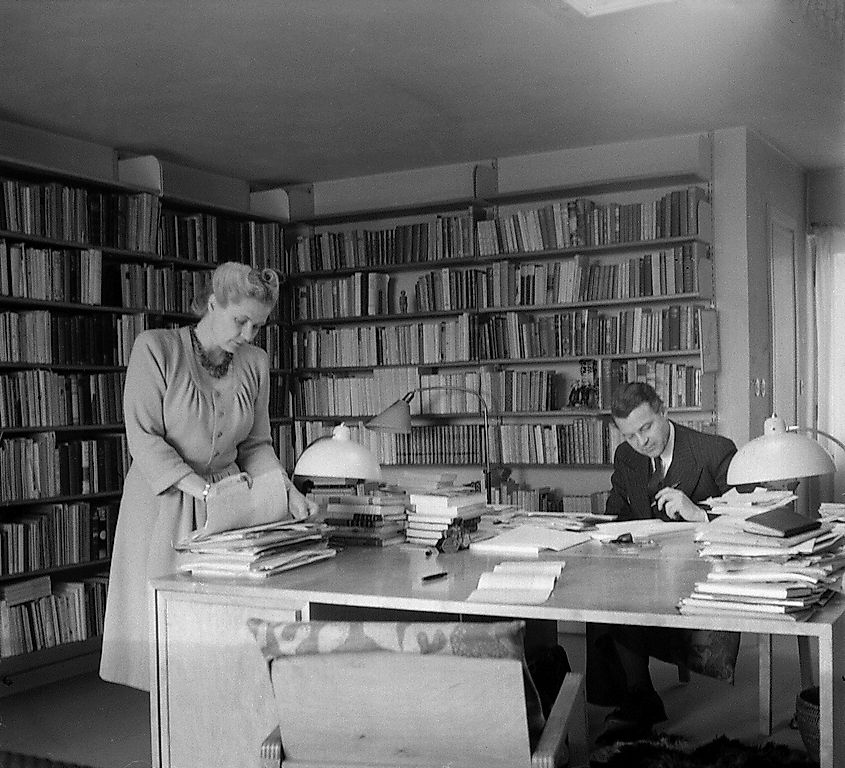
Alva Reimer and Gunnar Myrdal were both born in Sweden four years apart. They married in 1924, the same year Alva graduated from university. Throughout the 1930s, they were leading social scientists, asking tough questions related to housing, education, and race relations. After the war, Alva became the chairman of UNESCO’s social science section, among other positions. During the ensuing Cold War, she used her influence to call for global disarmament, putting pressure on the US and USSR. Meanwhile, Gunnar worked for the United Nations before founding the Institute for International Economic Studies at Stockholm University.
Alongside economist Friedrich Hayek, Gunnar won the Nobel Prize in Economic Sciences in 1974 for his research on the interconnectivity between the economic, social, and political processes. Eight years later, Alva was awarded the Nobel Peace Prize for advocating for nuclear disarmament. They are the only married couple to win two Nobel Prizes in different disciplines. Alva passed away in 1986 on her 84th birthday. Suffering from Parkinson’s disease, Gunnar died the following year.
May-Britt and Edvard Moser (2014)
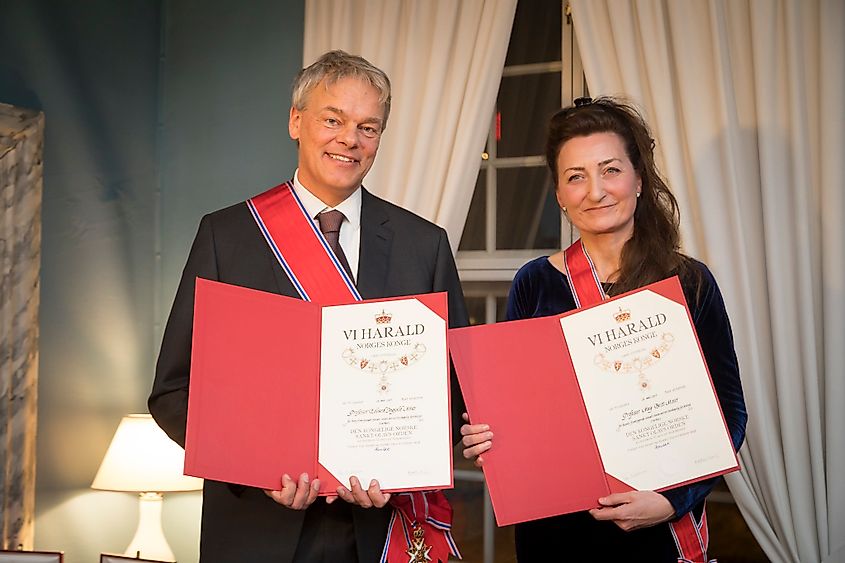
Norwegian natives May-Britt and Edvard Moser met at the University of Oslo. They married in the summer of 1985 and decided to form an academic partnership to study the connection between the brain and behavior. In 1990, they both graduated with degrees in psychology. One year later, they welcomed their first child, who often accompanied them to their lab. Determined to not let parenthood interrupt their research, May-Britt and Edvard received their PhDs in neurophysiology in 1995 and went on to have wildly successful careers.
In 2005, when experimenting on rats, they discovered cells that are important for determining position and how they cooperate with each other. These cells form a kind of coordinate system for navigation that laypeople often refer to as our inner GPS. Alongside neuroscientist John O’Keefe, they were awarded the Nobel Prize in Medicine in 2014 for their discovery. Unfortunately, May-Britt and Edvard divorced in 2016, but they continue to collaborate on various scientific projects.
Esther Duflo and Abhijit Banerjee (2019)
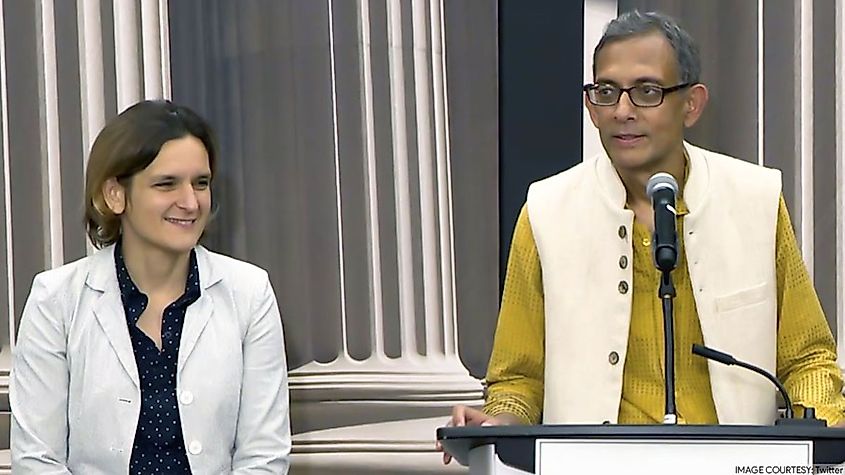
Growing up in Kolkata, Abhijit Banerjee was familiar with poverty due to the shanties located directly behind his home. Meanwhile, Esther Duflo grew up in Paris; everything she knew about poverty in Kolkata came from a comic book she had read that reduced the poor to clichés and stereotypes. As a graduate student, she visited the city and found the very opposite to be true. Esther met her future husband in 1999 when Abhijit agreed to be her supervisor at MIT. In 2003, they founded the Abdul Latif Jameel Poverty Action Lab to study poverty and understand its complexities. Together, they conducted over seventy experiments to determine what the poor were capable of achieving and what was holding them back.
It took over a decade, but Esther and Abhijit eventually married in 2015. Four years later, they were awarded the Nobel Prize in Economic Sciences alongside American economist Michael Kremer for their experimental approach to combatting global poverty. Esther is only the second woman to win a Nobel Prize in economics. Regardless, they are the sixth and final married couple to win the prestigious award. Today, they remain optimistic about the fight against ignorance and hope that poor countries are not doomed because of pre-conceived notions about poverty.











